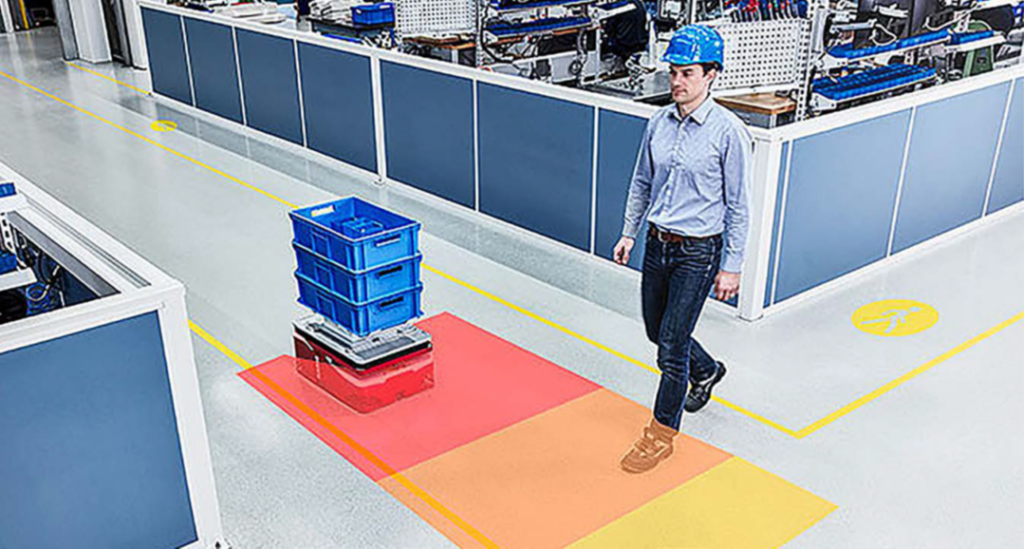Breaking down the requirements determined by a risk assessment
To determine a performance level of a machine, you first need to conduct a risk assessment. The output of this risk assessment should be a well-reasoned, well-informed report, summarized by a Required Performance Level (PLr) of the machine in question.
What is the performance level (PL) of a machine?
The performance level is a discrete level used to specify the ability of the safety related parts of the control system to perform a safety function under foreseeable conditions. The required performance level (PLr) is the mandatory performance level of a machine to reduce risk. It’s important to note that the PL must be greater than or equal to the PLr. Simply put, the higher risk a machine poses, the higher performance level it needs. The performance levels range from PLa to PLe: a being the lowest and e being the highest. A small, slow-moving mobile robot would most likely require a lower performance level (closer to PLa), where a large, fast-moving mobile robot would most likely require a higher performance level (closer to PLe). The performance level depends on the structure of the control system, the reliability of the components used, the ability to detect faults, as well as the resistance to multiple common faults in multiple channel control systems.

Determination of Required Performance Level (PLr)
For each safety function carried out by a safety-related parts of a control system, the required performance level (PLr) must be determined, which often follows these three parameters according to ISO 13849-1:
1. Severity of injury
- S1: Slight (normally reversible injury)
- S2: Serious (normally irreversible injury or death)
2. Frequency and/or exposure to hazard
- F1: Seldom-to-less-often and/or exposure time is short
- F2: Frequent-to-continuous and/or exposure time is long
3. Possibility to avoiding hazard or limiting harm
- P1: Possible under specific conditions
- P2: Scarcely possible
Using the corresponding parameters on the chart below, you can determine the required performance level of a machine. For example, if the severity of injury is slight, you start at S1. You now choose between F1 or F2. If the frequency and/or exposure to hazard is frequent to continuous, you choose F2. If the possibility of avoiding hazard or limiting harm is scarcely possible, we land at P2. This brings us to performance level C, which means we need to operate at this level or higher—so anywhere from PLc to PLe.

PL v. SIL
The chart above depicts both performance level (PL) and safety integrity level (SIL). These standards assign different labels, but use similar thresholds to define performance which should be applied commensurate to the level of risk. The labels are simply used by different governing bodies; ISO 13849-1 defines the labels as performance levels while IEC 62061 defines them as safety and integrity levels.
Probability of Dangerous Failure per Hour
Like you read earlier, performance levels range from PLa (low) to PLe (high); the higher the risk a machine poses, the higher the performance level it needs. More specifically, each performance level denotes the probability of dangerous failure per hour (PFHd), seen in the chart below:
| Performance Level (PL) | Probability of Dangerous Failure per Hour (PFHd) 1/h | Available SICK Products for Performance Level |
| a | ≥10-5 and <10-4 〈0.0001% to 0.01%〉 | – |
| b | ≥3 × 10-6 and <10-5 〈0.0003% to 0.001%〉 | TiM-S |
| c | ≥10-6 and <10-6 〈0.0001% to 0.0003%〉 | scanGrid2 |
| d | ≥10-7 and <10-7 〈0.00001% to 0.0001%〉 | microScan3, nanoScan3, outdoorScan3 |
| e | ≥10-8 and <10-7 〈0.000001% to 0.00001%〉 | deTec |
For example, Performance Level d is defined by ISO 13849 as a control system that has a probability of dangerous failure per hour between 10-7 and 10-6, which means there is a probability of 1 dangerous failure to every 1 million to 10 million hours. In other words, if the robots were running 24 hours a day, 365 days a year, it is mathematically guaranteed to run anywhere from 141 to 1,141 years of continuous operation without a fatal accident.
Why should you care about performance levels?
Performance levels help clarify the kind of protective measures that need to be put in place to safely operate the machine in question. When proper safety measures are taken, this reduces overall risk to employees and machines for an environment that is safe, reliable, and still maintains productivity.
Want to learn more about performance levels?





